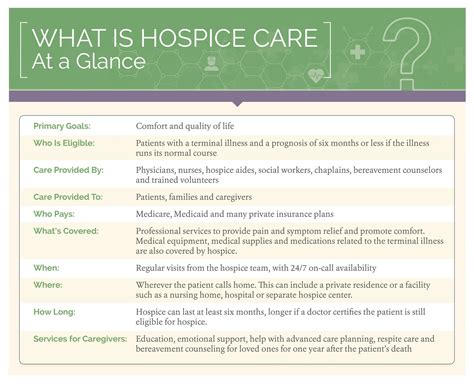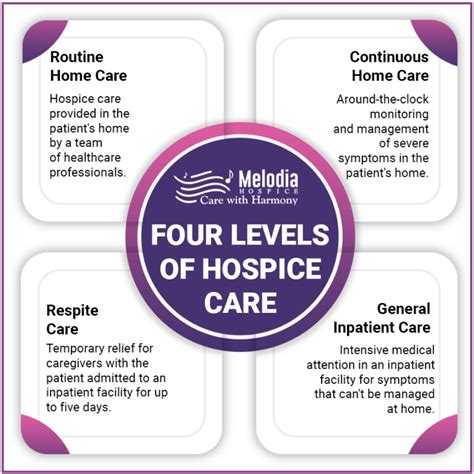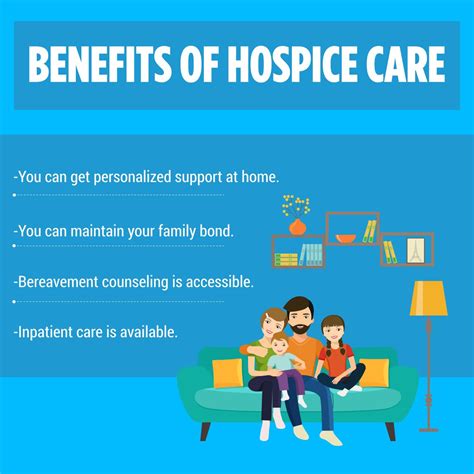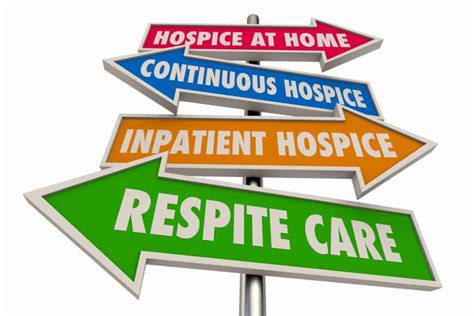Intro
Discover 5 essential facts about hospice care, including palliative services, end-of-life support, and compassionate care, to understand its benefits and improve quality of life for patients and families.
Hospice care is a type of care that focuses on providing comfort, relief, and support to individuals who are terminally ill and their families. It is a comprehensive and compassionate approach that prioritizes the quality of life, rather than the quantity. With the increasing demand for hospice care, it is essential to understand the facts and benefits of this type of care. In this article, we will delve into the world of hospice care, exploring its importance, benefits, and what it entails.
The importance of hospice care cannot be overstated. It provides a supportive and caring environment for individuals who are facing the end of life, allowing them to live their remaining days with dignity and comfort. Hospice care also extends to the families of the patients, offering them emotional support, guidance, and resources to navigate this challenging time. As the population ages, the need for hospice care will continue to grow, making it crucial to understand the facts and benefits of this type of care.
Hospice care is not just about providing medical treatment; it is about providing a comprehensive approach to care that addresses the physical, emotional, social, and spiritual needs of the patient and their family. This type of care is provided by a team of professionals, including doctors, nurses, social workers, and spiritual caregivers, who work together to create a personalized care plan that meets the unique needs of each patient. With the rising costs of healthcare, hospice care has become an essential option for individuals who are seeking a more compassionate and cost-effective approach to end-of-life care.
What is Hospice Care?

Benefits of Hospice Care
The benefits of hospice care are numerous and well-documented. Some of the most significant benefits include: * Improved quality of life: Hospice care focuses on providing comfort, relief, and support, allowing patients to live their remaining days with dignity and comfort. * Reduced pain and symptoms: Hospice care provides patients with access to pain management and symptom control, reducing their suffering and improving their overall well-being. * Emotional support: Hospice care provides emotional support and guidance to patients and their families, helping them to navigate the challenges of end-of-life care. * Spiritual support: Hospice care provides spiritual support and guidance, helping patients and their families to find meaning and purpose in their lives.How Does Hospice Care Work?

Steps to Access Hospice Care
Accessing hospice care is a straightforward process that involves the following steps: 1. Referral: A patient's healthcare provider must refer them to a hospice care program. 2. Assessment: A hospice care team will assess the patient's needs and develop a personalized care plan. 3. Admission: The patient is admitted to the hospice care program and begins receiving care. 4. Ongoing care: The hospice care team provides ongoing care and support to the patient and their family.Types of Hospice Care

Common Misconceptions About Hospice Care
There are several common misconceptions about hospice care, including: * Hospice care is only for cancer patients: Hospice care is available to anyone with a terminal illness, regardless of their diagnosis. * Hospice care is only for patients who are near death: Hospice care is available to patients who have a prognosis of six months or less, but it can be provided for longer periods of time if necessary. * Hospice care is expensive: Hospice care is often covered by insurance, including Medicare and Medicaid, making it an affordable option for many patients.Benefits of Hospice Care for Families

How to Choose a Hospice Care Provider
Choosing a hospice care provider can be a daunting task, but there are several factors to consider, including: * Accreditation: Look for a provider that is accredited by a reputable organization, such as the Joint Commission. * Experience: Consider a provider that has experience in caring for patients with your loved one's specific needs. * Services: Consider a provider that offers a range of services, including medical care, emotional support, and spiritual support. * Reputation: Research the provider's reputation online and ask for referrals from friends, family, and healthcare providers.Financial Aspects of Hospice Care

Conclusion and Next Steps
In conclusion, hospice care is a compassionate and comprehensive approach to care that prioritizes the quality of life for patients who are terminally ill and their families. By understanding the facts and benefits of hospice care, patients and their families can make informed decisions about their care and ensure that they receive the support and resources they need to navigate the challenges of end-of-life care. If you or a loved one is facing a terminal illness, consider reaching out to a hospice care provider to learn more about the services and support they offer.What is hospice care?
+Hospice care is a type of care that focuses on providing comfort, relief, and support to individuals who are terminally ill and their families.
How does hospice care work?
+Hospice care works by providing a comprehensive and compassionate approach to care that addresses the physical, emotional, social, and spiritual needs of the patient and their family.
What are the benefits of hospice care?
+The benefits of hospice care include improved quality of life, reduced pain and symptoms, emotional support, and spiritual support.
We hope this article has provided you with a comprehensive understanding of hospice care and its benefits. If you have any further questions or would like to learn more about hospice care, please don't hesitate to reach out. Share this article with others who may be facing a terminal illness or who are interested in learning more about hospice care. Together, we can work to raise awareness and promote compassion and support for those who need it most.
